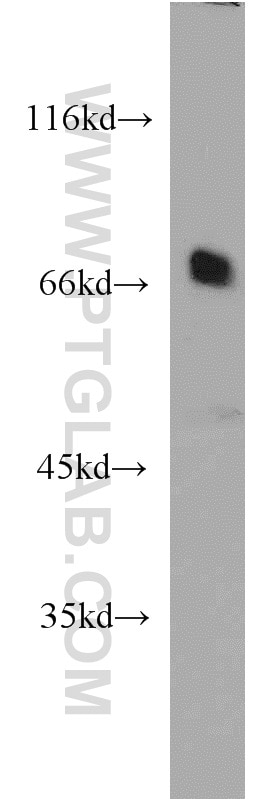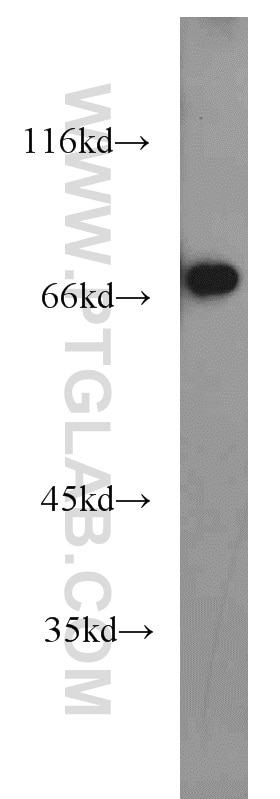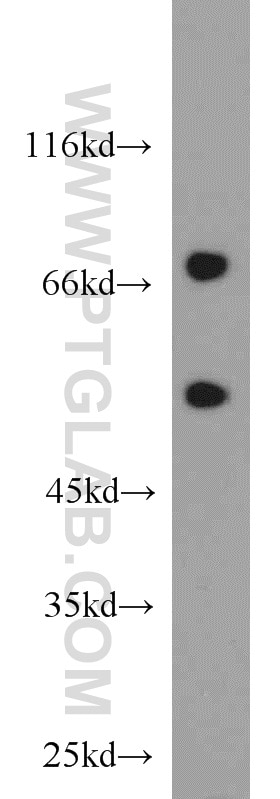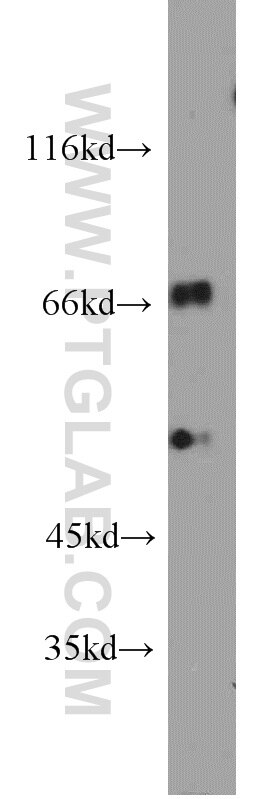SNX18 Polyklonaler Antikörper
SNX18 Polyklonal Antikörper für WB, ELISA
Wirt / Isotyp
Kaninchen / IgG
Getestete Reaktivität
human
Anwendung
WB, ELISA
Konjugation
Unkonjugiert
Kat-Nr. : 21946-1-AP
Synonyme
Geprüfte Anwendungen
| Erfolgreiche Detektion in WB | HL-60-Zellen, humanes Plazenta-Gewebe, L02-Zellen, MCF-7-Zellen |
Empfohlene Verdünnung
| Anwendung | Verdünnung |
|---|---|
| Western Blot (WB) | WB : 1:500-1:2000 |
| It is recommended that this reagent should be titrated in each testing system to obtain optimal results. | |
| Sample-dependent, check data in validation data gallery | |
Veröffentlichte Anwendungen
| WB | See 1 publications below |
Produktinformation
21946-1-AP bindet in WB, ELISA SNX18 und zeigt Reaktivität mit human
| Getestete Reaktivität | human |
| In Publikationen genannte Reaktivität | human |
| Wirt / Isotyp | Kaninchen / IgG |
| Klonalität | Polyklonal |
| Typ | Antikörper |
| Immunogen | SNX18 fusion protein Ag16645 |
| Vollständiger Name | sorting nexin 18 |
| Berechnetes Molekulargewicht | 628 aa, 69 kDa |
| Beobachtetes Molekulargewicht | 67-70 kDa |
| GenBank-Zugangsnummer | BC060791 |
| Gene symbol | SNX18 |
| Gene ID (NCBI) | 112574 |
| Konjugation | Unkonjugiert |
| Form | Liquid |
| Reinigungsmethode | Antigen-Affinitätsreinigung |
| Lagerungspuffer | PBS with 0.02% sodium azide and 50% glycerol |
| Lagerungsbedingungen | Bei -20°C lagern. Nach dem Versand ein Jahr lang stabil Aliquotieren ist bei -20oC Lagerung nicht notwendig. 20ul Größen enthalten 0,1% BSA. |
Hintergrundinformationen
SNXs (sorting nexins) are a diverse group of cytoplasmic and membrane-associated proteins that are classified by the presence of a phospholipid-binding motif-the PX domain (PMID:12461558). SNXs are involved in endocytosis and protein trafficking. SNX18, together with SNX9 and SNX33, constitutes a separate SNX9 subfamily which is required for mitosis through endocytosis processes (PMID: 22718350, 20427313). SNX18 acts as a positive regulator of autophagy, regulates ATG9A trafficking from recycling endosomes (PMID: 24113029, 29437695).
Protokolle
| PRODUKTSPEZIFISCHE PROTOKOLLE | |
|---|---|
| WB protocol for SNX18 antibody 21946-1-AP | Protokoll herunterladen |
| STANDARD-PROTOKOLLE | |
|---|---|
| Klicken Sie hier, um unsere Standardprotokolle anzuzeigen |





